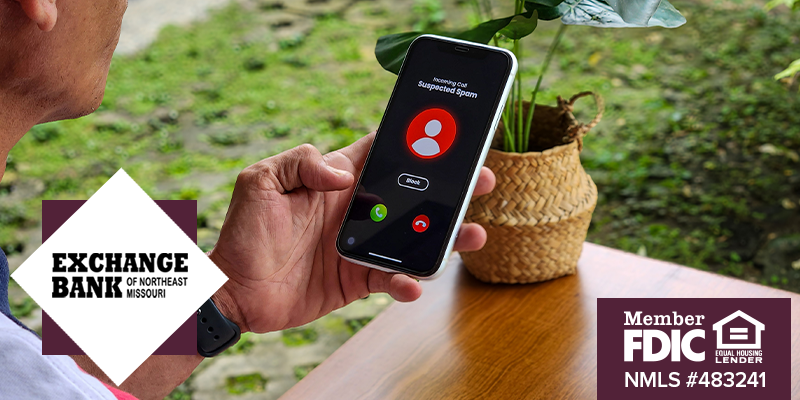EBNEMO
Updated Mon August 25, 2025
Published Under: Cyber Security

Imagine this: your phone rings, and the caller ID says it’s your bank. The voice on the other end knows your name, maybe even the last four digits of your account. They claim there’s been suspicious activity, and they need to verify your identity.
It feels urgent and real — but it might be a scam.
This is the world of spoofing scams, where fraudsters manipulate caller ID, emails, or text messages to impersonate trusted institutions like your bank. These scams are on the rise in Missouri and across the U.S., and they’re becoming more convincing every day.
Here’s how to protect yourself and your finances.
Read About:
- What Is a Spoofing Scam?
- Types of Spoofing
- How Fake Bank Calls Work
- Who They Target and Why
- How to Spot a Spoofed Call
- How to Verify Bank Calls
- What to Do If You Answered or Shared Info
- What Your Bank Will Never Do
- How to Report and Protect Yourself
- The Bottom Line
What Is a Spoofing Scam?
Spoofing happens when a scammer deliberately changes the information displayed on your caller ID, email sender line, or text message “from” field to make it look like it’s coming from someone you trust, often your bank.
Their goal is simple: trick you into sharing personal or financial information so they can steal money or commit identity theft.
Scammers Use Spoofing To:
- Steal sensitive personal and financial information
- Gain access to your bank accounts
- Install malware or ransomware via follow-up messages or emails
Related: Cyber Security Tips
Types of Spoofing You Might See
While phone calls are the most common, scammers use several forms of spoofing:
- Phone Call Spoofing – Caller ID shows your bank’s name or number, but the call is from a scammer.
- Email Spoofing – The “from” address looks legitimate (like support@yourbank.com) but links lead to fake websites.
- Text Message Spoofing (Smishing) – Messages look like they’re from your bank or a delivery company and often include suspicious links.
Stay tuned – future blogs in our fraud series will dive deeper into each of these scam types! Bookmark this blog and check back for more articles to help keep you safe.
How Fake Bank Calls Work
Spoofing calls usually follow a script designed to create panic and urgency. Common tactics include:
- Claiming suspicious activity on your account
- Asking you to “verify” your account number, PIN, password, or one-time code
- Urging you to transfer money to a “safe” account
- Threatening to freeze or close your account if you don’t act immediately
The scammer may sound professional, use banking terms, and even reference real details about your account. Some go as far as spoofing your bank’s exact customer service number.
Example of a Spoofing Scam Script:
“Hi, this is Sarah from Exchange Bank of Northeast Missouri. We’ve noticed suspicious activity on your checking account. To prevent your account from being frozen, I just need you to confirm your account number and online banking password.”
Who They Target and Why
- Older Adults – Often targeted by phone for “urgent” account issues or fake tech support calls.
- Younger Adults – More likely to fall for text message scams or respond to emails that look like account alerts.
- Anyone Distracted or Stressed – Scammers thrive on catching people off-guard.
How to Spot a Spoofed Call
Look out for these red flags:
- Requests for sensitive information over the phone
- High-pressure or urgent demands
- Threats of arrest, account closure, or legal action
- Unprofessional tone, poor grammar, or awkward pauses
- Caller refuses to let you hang up and call back
How to Verify Bank Calls
If you get a call that seems suspicious, even if the caller ID looks legitimate, take these steps:
1. Don’t Share Personal Information
Never give out your full account number, PIN, password, or one-time passcodes over the phone unless you have initiated the call.
2. Hang Up and Call Back
Use the phone number from your bank’s official website or the back of your debit card — not the one on caller ID.
3. Check Your Account
Log in to online or mobile banking to confirm whether there’s actually an issue.
4. Enable Two-Factor Authentication (2FA)
Adds an extra security layer to protect your accounts.
What To Do If You Answered or Shared Information
If you realize you may have given details to a scammer:
- Contact your bank immediately
- Change your online banking password and security questions
- Monitor your accounts for unusual activity
- Report the call to the FTC at reportfraud.ftc.gov
What Your Bank Will Never Do
Legitimate banks — including Exchange Bank of Northeast Missouri — will never:
- Ask for your full PIN or online banking password
- Demand immediate payment or money transfers
- Threaten you with arrest or account closure
- Ask you to install software or apps to “fix” an issue
Report and Protect
Fraudsters are constantly evolving their methods, but awareness is your best defense. If you ever feel uncertain about a call, text, or email:
- Hang up immediately
- Call your bank using the number you know is correct
- Report suspicious messages to the FTC and to us at EBNEMO
You can also visit our Security Resources for more information and to stay updated on the latest scams affecting our community.
The Bottom Line
Spoofing scams might look and sound convincing, but your best defense is skepticism. When in doubt, hang up, verify, and protect your personal information.
Next in the Series: Stay tuned for our next fraud awareness post on text message scams — and how to avoid clicking on dangerous links.
Member FDIC, Equal Housing Lender, NMLS#EBNEMO
Comments